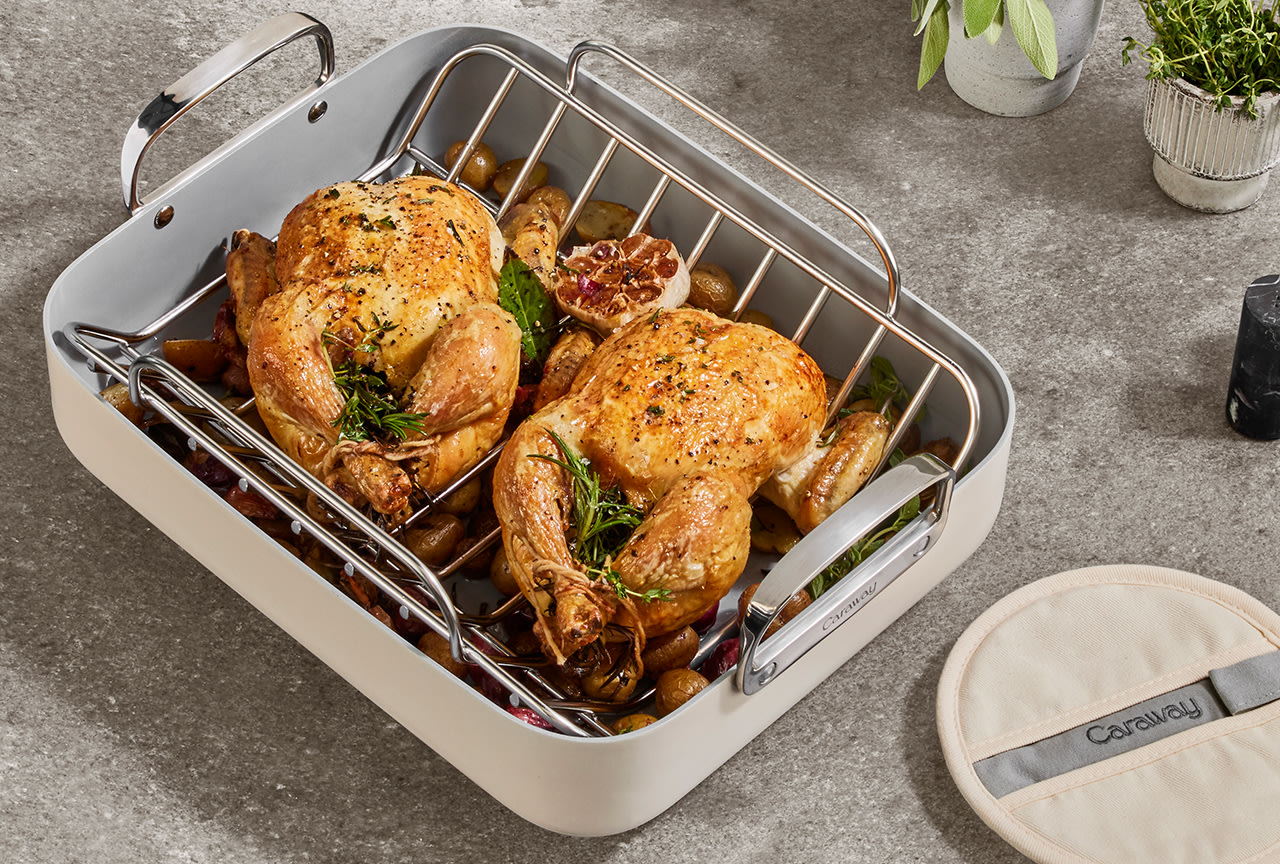Perfectly Placing Prime Rib in a Roasting Pan for Best Results
Written By James Morgan
Barbecue enthusiasts, gather round! Today, we're diving into a topic that often stirs much debate and curiosity: how to place prime rib in a roasting pan. Whether you're a seasoned griller or a novice cook, knowing the right way to position your prime rib can make all the difference between a good meal and a mouth-watering gastronomic experience.

Why Placement Matters
Positioning your prime rib correctly in a roasting pan is critical for several reasons. Firstly, it ensures that the meat is cooked evenly, allowing for the perfect balance of tenderness and flavor. Secondly, correct placement helps in circulating heat properly, which is essential if you want that crispy crust enveloping a juicy interior.
Choosing the Right Roasting Pan
Before you even get to placing your prime rib, selecting the proper roasting pan is crucial. A pan that's too large can cause the meat to cook unevenly, while a pan that's too small can create a mess in your oven.
:max_bytes(150000):strip_icc()/faw-roasting-pan-test-farberware-nonstick-steel-flat-rack-rkilgore-9-06-a01a384e449c4adbb556fe24e6957ef9.jpg)
Preparing Your Prime Rib
Before positioning your prime rib in the pan, proper preparation is key. Start by letting the meat come to room temperature, which usually takes about 30-45 minutes. Pat the roast dry with paper towels to remove any excess moisture, as this helps achieve a beautifully browned exterior.

The Correct Way to Place Prime Rib in Roasting Pan
Alright, heres the crucial part. Follow these steps meticulously to ensure your prime rib is placed perfectly in the pan:
Pan Setup
First, set up your roasting pan with a rack. The rack elevates the meat, allowing heat to circulate and giving you an even roast. If your pan doesnt come with a rack, you can create one using vegetables like carrots, celery, and onions. This not only keeps the meat elevated but also infuses it with additional flavors.
Positioning the Meat
Place the prime rib on the rack, fat side up. This allows the fat to render during cooking, basting the meat and keeping it moist. Ensure the bones, if any, are facing down. The bones act as a natural rack, and their positioning can affect the even distribution of heat.
Seasoning and Aromatics
Season the meat generously with kosher salt and freshly ground black pepper. Feel free to add aromatic herbs like rosemary and thyme for added flavor. Insert a meat thermometer into the thickest part of the roast to monitor its internal temperature accurately during cooking.

Cooking Your Prime Rib
With the prime rib correctly positioned in the roasting pan, it's time to cook. Preheat your oven to the desired temperature, generally around 450F for the initial searing phase. Once the roast is seared, reduce the temperature to around 325F to finish cooking.
Checking for Doneness
Using a meat thermometer, start checking the internal temperature about 45 minutes into the cooking time. For medium-rare, aim for an internal temperature of 130F to 135F. Remember that the meat will continue to cook slightly after being removed from the oven, a process known as carryover cooking.
Resting Period
Once the prime rib reaches the desired internal temperature, take it out of the oven and let it rest for at least 20-30 minutes. This resting period allows the juices to redistribute within the meat, making each slice juicier and more flavorful.
Carving and Serving
After the resting period, move the prime rib to a cutting board. Carefully slice against the grain to ensure each bite is tender. Serve with your favorite sides and enjoy the fruits of your labor!
FAQ
Q1. Can I cook prime rib without a rack?
A1. Yes, you can use vegetables like carrots, celery, and onions to act as a natural rack.
Q2. How long does a 6-pound prime rib take to cook?
A2. On average, it takes about 2-2.5 hours at 325F for a medium-rare finish.
Q3. Can I marinate the prime rib before roasting?
A3. Absolutely! Marinating adds additional flavors, but ensure to pat it dry before placing it in the pan.
For more in-depth guides and tips, visit our comprehensive list of resources on roasting pans.
As an Amazon Associate, I earn from qualifying purchases.



